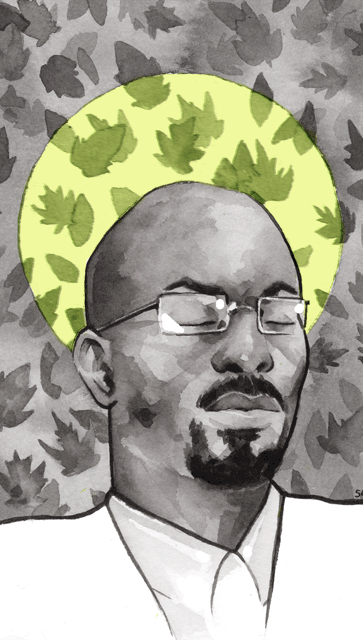The Green-Collar Economy: How One Solution Can Fix Our Two Biggest Problems

The Van with the Plan
The Green-Collar Economy:
How One Solution Can Fix Our Two Biggest Problems
By Van Jones with Ariane Conrad
HarperOne, 2008, 256 pages, $25.99
By Ellen Barfield
Van Jones knows how the United States can go from a fossil fuel-guzzling, faltering to failing economy, with incredible numbers of incarcerated and impoverished people, to being an efficient and inclusive nation enjoying a Green New Deal. As with many brilliant ideas, Jones’ plan is simple, not easy. As a graduate of Yale Law School, Jones straddles the divide between people of color who have been kept poor and the disproportionately white highly educated class. His frustration is clear at the difficulty of bringing the political power of the environmentally aware middle class together with the people in need of training for jobs refitting U.S. homes and neighborhoods. But it will take such an alliance to change our economy and culture. He calls for not just hybrid cars, but a hybrid movement.
“It is unlikely that the present high lords of oil, coal, and armaments will reverse course or give up their power without a struggle,” says Jones, noting that the well-off will have to relinquish their excessive regard for property which has led to politicians who spout demagoguery about being tough on crime, massive and often abusive police forces, and huge rates of imprisonment. “The best answer to our ecological crisis also responds to our socioeconomic crisis. The surest path to safe streets and peaceful communities is not more police and prisons, but ecologically sound economic development.”
The elite images of wilderness tree-huggers threatening jobs to protect endangered species must give way to community development, so that the poor, who fear losing even more, will see their stake in it. People whose lives are in constant crisis don’t see what they can do about planetary crisis, but if the huge task of redesigning our lives offers good-paying jobs, they will see the opportunities.
One of the most exciting parts of The Green-Collar Economy was the detailing of financing schemes whereby newly trained and newly inspired people would repair, caulk, and insulate homes and offices, paid with creative adjustments to utility bills reduced by resulting energy savings, or as Jones calls them, “negawatts.” Training can put people to work growing organic food locally, running comprehensive transit systems, disassembling and recycling materials, and repairing and replacing deteriorated water systems.
Exciting projects to accomplish all of these are being carried out in some places, such as Jones’ own Oakland, the Bronx, and Chicago. But Jones calls for a rapid coalescing of the well-off and the needy to make these projects nationwide, because time is running out. The 18-page resource list at the end of the book contains terrific enterprises all over the country that need to be supported and spread.
Jones has just been named to the White House Council on Environmental Quality as Special Advisor for Green Jobs, Enterprise and Innovation, or as some have put it, as the green jobs czar. Jones vigorously rejects that title, gallantly offering new Labor Secretary Hilda Solis, who was an original co-sponsor of the 2007 Green Jobs Act, the title of Green Jobs Czarina!
I had the good fortune to hear Van Jones speak as the Ware Lecturer at the Unitarian Universalist General Assembly in Ft. Lauderdale, Fla., in June 2008. His speech was funny, challenging, and inspiring for us fairly environmentally informed, comfortable middle-class, mostly white folks. He’s a better speaker than he is a writer, or perhaps the book was raced into print with only cursory editing to meet the growing wave of realization that Jones notes in his last chapter. Parts of the book are repetitive, and there are a fair number of typos. And the cute phrases work better in a sermon than in print. Nonetheless, this book offers a real vision of how to move us all from here to there.
